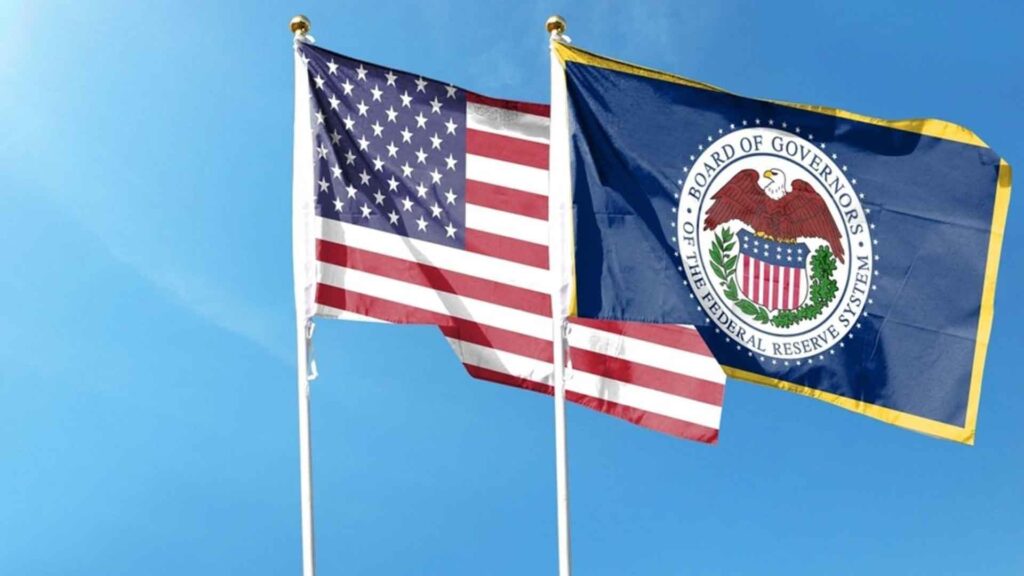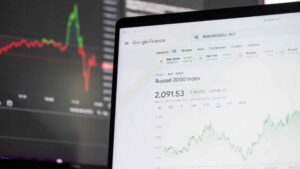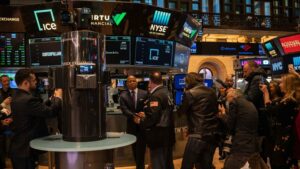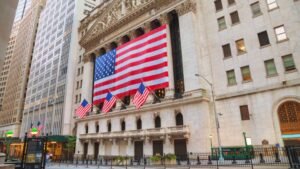After 9 months on hold, the Federal Reserve is widely expected to lower interest rates by 25 basis points on Wednesday, stemming from weaker economic data, especially the labor market, which the Fed is prioritizing over inflation.
Markets have priced in a 100% chance of a cut, with Fed Chairman Jerome Powell hinting at an eased version of monetary policy. However, political pressures add more uncertainty to the Fed’s plans and future.
Rate Cut Expectations
Along with this week’s expectations, Markets have also priced in 3 rate cuts expected this year due to economic concerns. Some voters might push for a bigger cut, as Governors Waller and Bowman opposed holding rates in July. ⁽¹⁾
However, if the Fed cuts too aggressively, it could lead to a policy error. According to commentators, the central bank could fall into the trap of leaning too much on labor market risks without worrying about inflation. ⁽²⁾
Inflation and Labor Market Concerns
A stagnant labor market in August and revisions to past data caused higher expectations for rate cuts. Job growth for June was revised to -13,000 jobs, while July showed below-trend growth. These revisions mark three months of slowdowns in job growth, with unemployment expected to remain around 4.3%. ⁽³⁾
Annual revisions to Nonfarm Payrolls data for the year prior to March 2025 showed a drop of 911,000 from the initial estimates, according to a preliminary report from the Bureau of Labor Statistics. ⁽⁴⁾
The numbers, which are adjusted from data in the quarterly census and reflect updated information on business openings and closings, add to evidence that the employment picture in the US is weakening. Most of the time span for the report came before President Donald Trump took office, indicating the jobs picture was deteriorating before he began imposing tariffs against US trading partners.
While speaking at Jackson Hole, Jerome Powell said that risks are shifting, which could lead to policy changes. The Fed has become increasingly focused on this potential risk, especially after revisions included in the July employment report showed much weaker job growth in recent months than previously thought.
Meanwhile, inflation is expected to remain above the Fed’s 2% target until at least 2027, with the latest CPI data showing a rise in consumer prices. The annual increase in inflation was the largest in seven months, but the data is not expected to prevent a much-anticipated interest rate cut from the Fed next week against the backdrop of labor market weakness. ⁽⁵⁾
The latest inflation report was the last major data before the Fed’s meeting. Despite sticky inflation and risks from tariffs, policymakers hinted at an easing policy.
Political Pressures and Fed Board Uncertainty
President Trump has criticized Jerome Powell for not cutting rates. The President has openly been trying to fire Fed Governor Lisa Cook over claims of mortgage fraud. Trump recently appealed a judge order that blocked him from firing the governor.
Trump’s nominee Stephen Miran might also join the board, as a Senate vote advanced his nomination to replace former Fed Governor Adriana Kugler. As someone who favors lower interest rates and economic growth, Moran’s stance upon joining could be a dovish one.
Trump argues high rates hurt the economy and add to national debt costs. Future decisions could be controversial as the Fed balances inflation and employment.
Market Signals and Future Outlook
Markets priced in a 25-basis point cut. This is far short of the steeper cuts Trump wants. A job market slowdown adds pressure to boost employment and avoid higher unemployment.
The Fed now faces extreme pressure from President Trump. His actions could raise concerns that rate cuts might only be following presidential wants, not economic needs.



